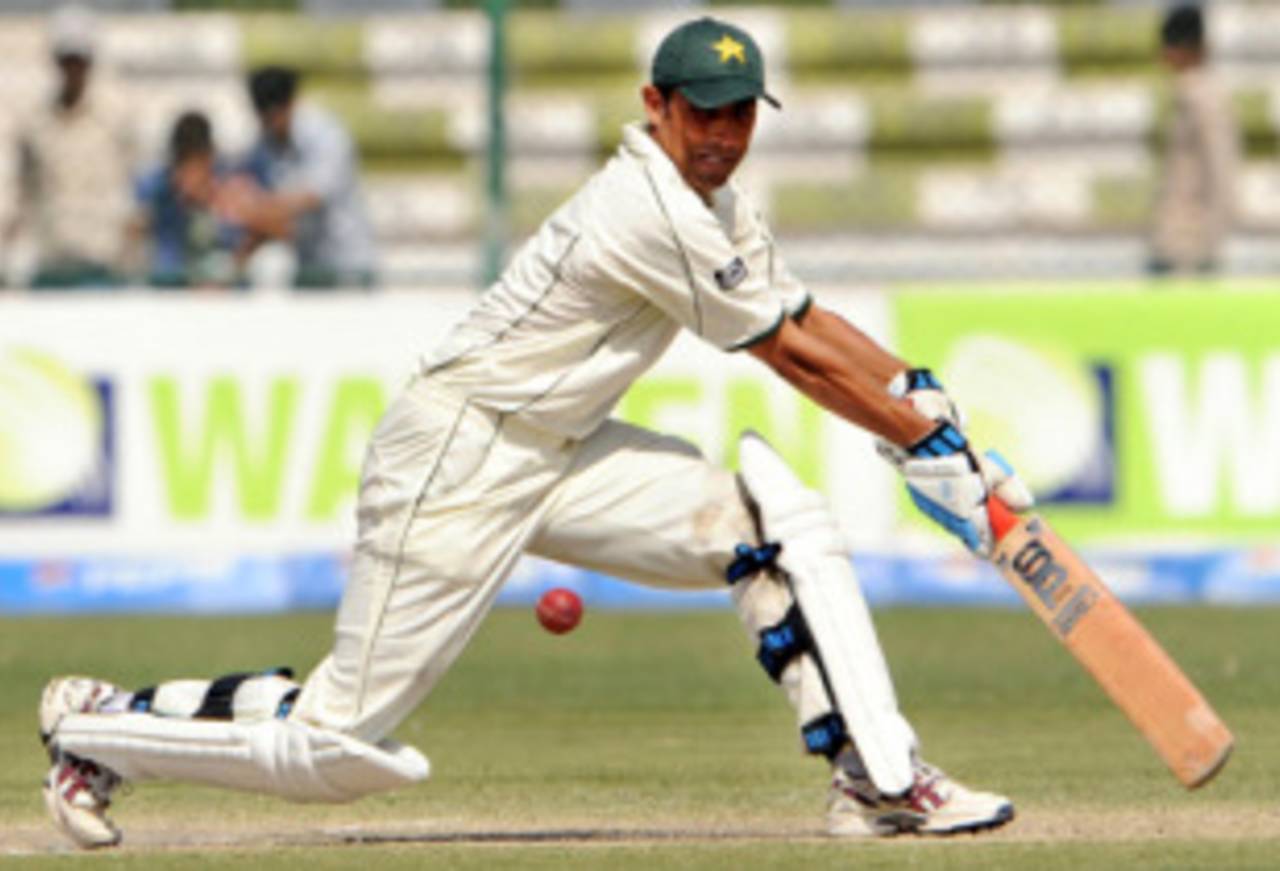The pitch needs attention
The dead pitch is Karachi was as poor as the one in Chennai where Virender Sehwag scored a faster than run-a-ball hundred
Sambit Bal
25-Feb-2013

AFP
Most writers don't mind people disagreeing with what they have written, or even getting criticised. Freedom of expression, their own and that of others, is a value journalists cherish and guard fiercely. But I must confess I am a bit surprised with some of the reactions to a piece I wrote criticising the Karachi pitch that managed to get into the record books for all the wrong reasons. In fact, I had expected the opposite; that the Pakistan fans would agree with me that pitches that produce no contest between bat and ball are the biggest threat to Test cricket. Instead, many readers found my views "extreme", "ignorant", and worst of all "prejudiced".
Perhaps I wasn't able to communicate what I wanted to say clearly. I thought I was speaking on behalf of the cricket fan, in Pakistan and elsewhere, but if it came across as if I was singling out Pakistan unfairly, then obviously I failed. I felt the same way about the Chennai Test between India and South Africa despite Virender Sehwag's sensational, faster than a run-a-ball triple-hundred. Any pitch that produces 1498 runs at the cost of 25 wickets is cricket's enemy; and any pitch that reduces a bowling attack comprising
Dale Steyn, Makhaya Ntini and Morne Morkel to cannon fodder makes a mockery of the most central appeal of cricket. I rejoiced when the bowlers struck back on a slightly bouncy, but by no means unplayable or dangerous, on which India were dismissed for 76 on the first morning in Ahmedabad.
The pitch for the final Test of the series, in Kanpur, produced an interesting debate. India had obviously wanted a turner and they got hit. The pitch looked baked and cracked before the match began, and though it didn't turn out as dangerous as people feared as it might be, run-scoring was still a struggle. The match finished in three days, and the pitch was reported by the match referee for being below par.
That riled me no end. Yes, the pitch wasn't ideal, but it produced a result; South Africa scored 265 in the first innings and India 325; and no one got it. How was this pitch any worse than the Chennai pitch on which only two innings were completed? Perhaps the greater crime of the Kanpur track was that the match didn't last the distance, costing the broadcasting channel
precious advertising revenue.
This was at the heart of my protest against the mega bore in Karachi. For Test cricket to stay strong and vibrant, administrators must first protect the interests of the spectator.
I am keen on hearing from you. Our love for cricket keeps us on the same side.
Sambit Bal is the editor of ESPNcricinfo